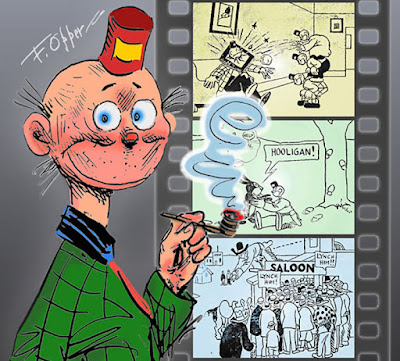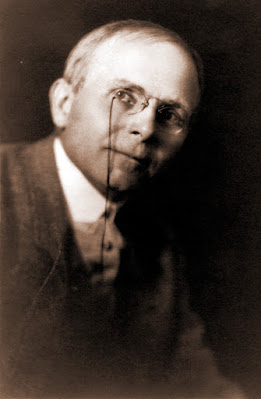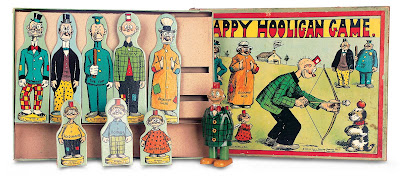A look at the design, market and legacy of Victorian pottery
Monday, November 21, 2022
Saturday, November 19, 2022
French Majolica Cemetery Decoration
I was inspired to write this post because the French tradition of decorating graves with these majolica flowers is basically unknown outside of France, Brussels and Switzerland. It’s a lovely tradition. Creating ceramic flowers that will never die assures these cemeteries will be filled with color and joy year round.
Tuesday, November 15, 2022
Happy Hooligan Majolica
The Happy Hooligan comics were an immensely popular comic series in the first three decades of the Twentieth century. Created by cartoonist Frederick Burr Opper, it debuted in 1900. Opper was a political cartoonist and illustrator who created the strip while working at the Hearst Newspaper chain. It gained international popularity running until 1932 when Opper’s eyesight began to fail, leading to his retirement.
The Happy Hooligan comic strip followed the exploits of the Hooligan brothers, three poor, affable hobos with an aversion to work whose adventures made up the premise for the comic strip. The family consisted of the three brothers, Happy Hooligan, Gloomy Gus and Montmorency. Rounding out the cast of characters were Happy’s girlfriend Suzanne, Happy’s dog Flip, the brother's three wisecracking nephews, and an ever present policeman.
Its great popularity led to a marketing boom for Hearst Newspapers with the creation of three live action short films and an estimated 50 cartoon features. There were also theatrical productions, books, dolls, toys, games, ceramics and associated ephemera.
Happy Hooligan, the character, was resurrected briefly in the early 1960s as a recurring visitor in Sam’s Strip, a comic strip that featured characters from other comic series’.
All three Hooligan brothers made their way into majolica figures made by Continental majolica potteries with an occasional appearance by Flip, the dog.
Wednesday, November 2, 2022
You Just Never Know Where You’ll Find Majolica
A reader told me a surprising story.
During the pandemic she and her mother spent quite a bit of time strolling the beaches of Galveston Island, Texas. During that time they would stumble across pieces of pottery and glass that had been discarded over the years—fragments of history.
The nature of these broken shards she collected over the years vary widely, as you imagine they would, encompassing a number of different things. Among the things she has collected are pieces of transferware, as shown above, tiles, insulators, utilitarian pottery and, yes, majolica.
What surprised me about this is that the majolica was instantly recognizable. How ever do you imagine, did Etruscan Majolica show up on the shores of the Gulf of Mexico?
The shards, their sharp edges worn smooth by decades of immersion in the churning water of the surf, still bore parts of their bright shiny glaze. One piece was clearly recognizable as part of a handle. Another showed a leaf that once encircled the teapot. Others showed the majolica pink glaze that lined the interior of the teapot. Like fossils uncovered, they spoke of a previous life in Victorian America long lost.
The reader told me that the area of the beach where the pieces were found was adjacent to the home of a wealthy Galveston family. Maybe these shards belonged to a teapot that once served the family tea, only to be discarded when broken many years ago. Or possibly these were the remains of a teapot ordered from the 1884 New Orleans Cotton Centennial Exposition at which Griffen, Smith & Company exhibited. These could also be artifacts from the great hurricane that ravaged the city in 1900 killing many thousands of its residents and causing millions of dollars in damage.
If only objects could speak!



























































